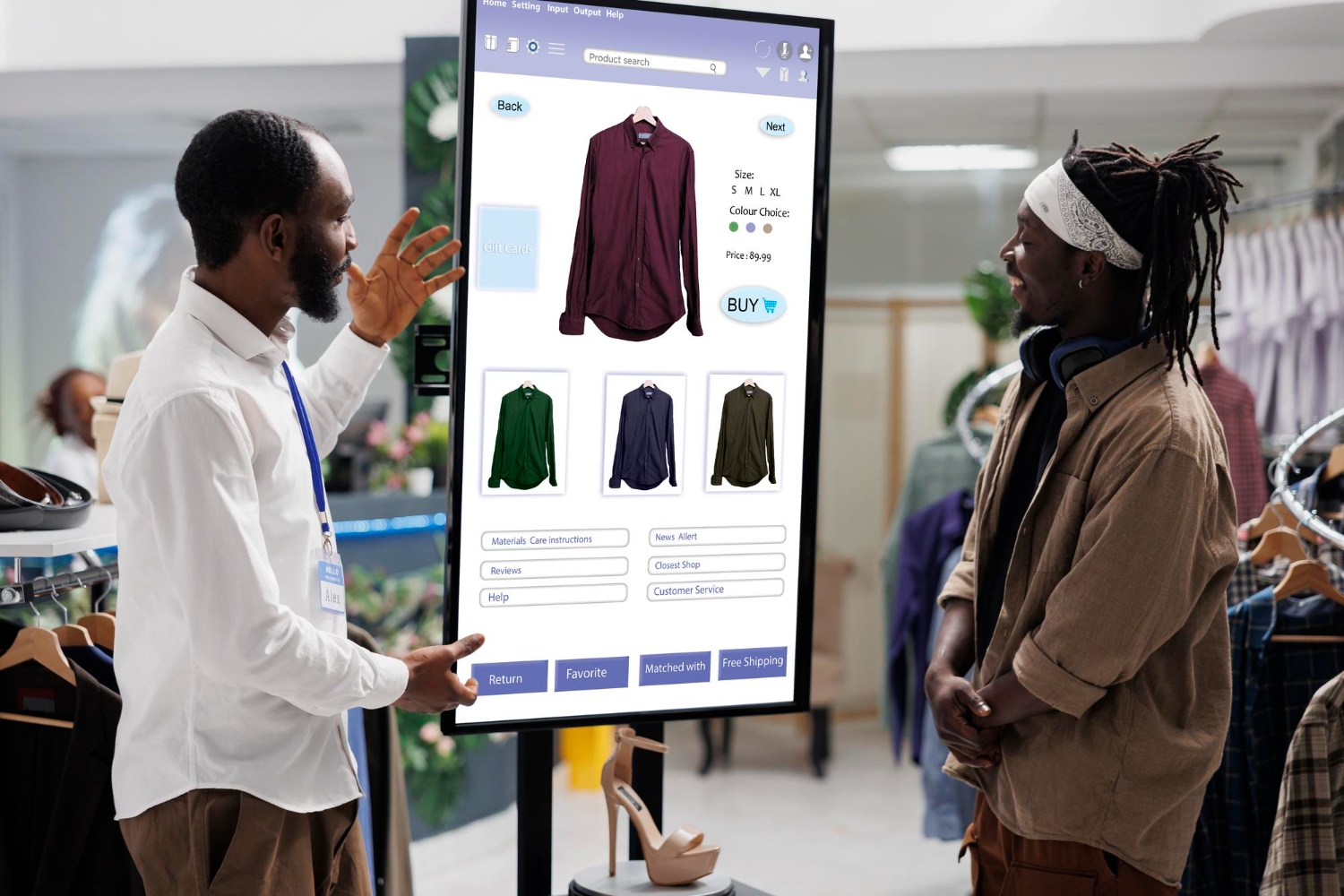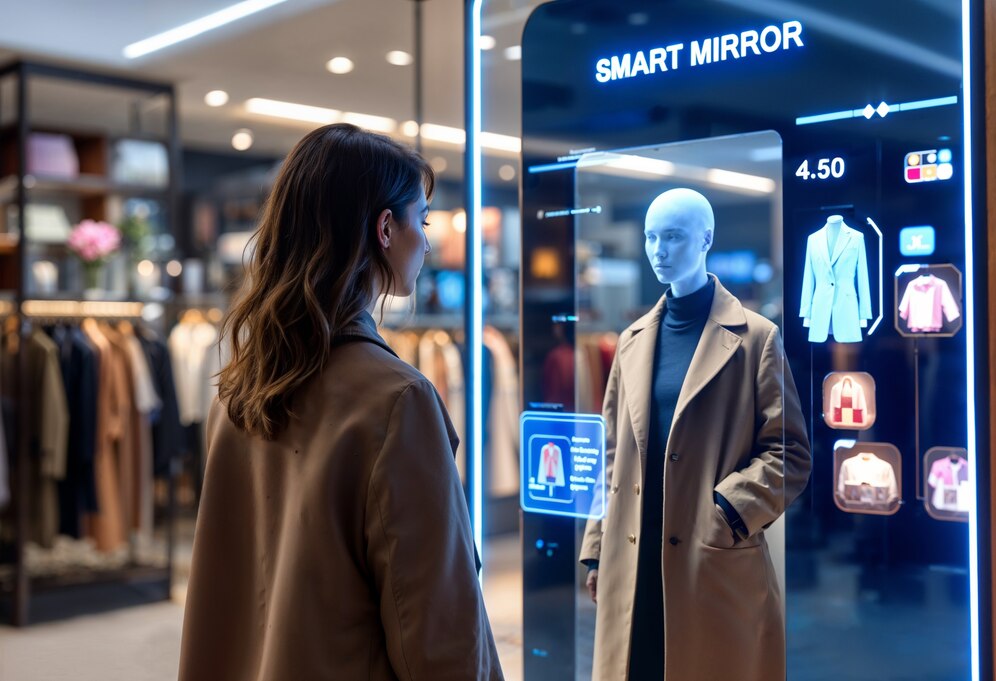Virtual Fitting Rooms: The Future of Online Shopping
Online shopping has revolutionised the way we buy clothes. Convenience, variety, and global access have made fashion more accessible than ever. Yet, there’s one persistent drawback: fit. How many times have you ordered the perfect piece online, only to return it because it just didn’t look or feel right? Enter the virtual fitting room—an innovation

Online shopping has revolutionised the way we buy clothes. Convenience, variety, and global access have made fashion more accessible than ever. Yet, there’s one persistent drawback: fit. How many times have you ordered the perfect piece online, only to return it because it just didn’t look or feel right?
Enter the virtual fitting room—an innovation poised to solve one of e-commerce’s biggest challenges. As technology continues to shape the shopping experience, virtual fitting solutions are emerging as a cornerstone of fashion technology, combining 3D modelling, artificial intelligence, and augmented reality to help consumers try before they buy—without stepping into a physical store.
In this blog, we’ll explore how online shopping tech is transforming retail, the brands leading the charge, and what the future holds for virtual try-ons in the fashion industry.
What Is a Virtual Fitting Room?

A virtual fitting room is an interactive online tool that allows users to visualise how clothing might look on them using digital avatars, body scans, or augmented reality overlays. Instead of relying on static product images, shoppers can “try on” garments using their own measurements, smartphone cameras, or even uploaded selfies.
Types of Virtual Fitting Technology:
- 3D avatars created from body measurements
- Augmented reality (AR) try-ons using smartphone cameras
- AI-driven size recommendations based on past purchases and returns
- Virtual mirrors in physical retail stores that combine real-time reflection with garment overlays
This technology addresses a central pain point in e-commerce—uncertainty about size, fit, and overall appearance.
Why Virtual Fitting Rooms Matter in Online Shopping
1. Reduces Returns
One of the biggest problems facing online retailers is return rates—especially in fashion. According to recent studies, over 30% of online clothing orders are returned, with incorrect fit being the most common reason. Virtual fitting helps shoppers make more accurate choices the first time.
2. Improves Customer Confidence
Trying on clothes, even virtually, builds trust. When customers feel confident about how something will look, they’re more likely to buy—and less likely to second-guess their decision.
3. Supports Inclusivity and Personalisation
Virtual fittings can be tailored to all body types, sizes, and even postures—offering a much more inclusive shopping experience than standard size guides.
4. Boosts Brand Loyalty
Innovative features enhance the customer experience and encourage return visits. Retailers who embrace fashion technology are seen as forward-thinking and customer-focused.
How It Works: The Tech Behind the Try-On
1. Body Scanning and Measurement Input
Many platforms allow users to input their measurements or upload photos to generate a digital avatar. Some apps scan a user’s body using a smartphone camera, creating a 3D model for more accurate simulation.
2. Augmented Reality Overlays
AR allows users to “see” how an item might look on their real-time image. Similar to filters on Instagram or Snapchat, these overlays adjust with your body as you move.
3. AI and Machine Learning
Artificial intelligence analyses purchase history, body shape data, and garment design to recommend sizes and styles. Over time, it learns and improves its accuracy.
4. Fabric Simulation
Advanced virtual fitting rooms simulate fabric behaviour—how a dress flows, where trousers stretch, and how sleeves drape. This provides a more realistic sense of comfort and movement.
Leading Brands and Platforms Using Virtual Fitting Rooms
1. Zalando
The European retail giant launched a virtual try-on pilot allowing customers to view how garments would fit a digital avatar with similar body proportions. It’s one of the largest mainstream applications of the tech.
2. ASOS
Known for its digital innovation, ASOS trialled AR models during the pandemic and continues to explore 3D fit technology, offering size suggestions based on past purchases.
3. Fit Analytics (Snap Inc.)
Acquired by Snap Inc., this tool uses AI and data from millions of shoppers to offer size recommendations and virtual fit suggestions for global fashion brands.
4. Perfect Corp
Initially popular in beauty tech, Perfect Corp has expanded into fashion AR, allowing users to try on accessories like glasses, earrings, and hats via live video.
5. Zeekit (Walmart)
Acquired by Walmart, Zeekit enables customers to upload photos and see clothing on a virtual image of themselves. It combines realistic draping with easy swapping between colours and sizes.
The Benefits of Virtual Fitting Rooms for Retailers
1. Increased Conversion Rates
By offering an immersive experience, retailers see improved engagement and higher conversion rates. Customers are more likely to finalise their purchase when they can visualise the outcome.
2. Reduced Operational Costs
With fewer returns, companies save on shipping, processing, and restocking—creating both economic and environmental benefits.
3. Data Insights
These tools generate valuable data on consumer preferences, sizing trends, and browsing behaviours, helping brands optimise their product offerings.
4. Competitive Differentiation
As online shopping tech becomes more advanced, brands that adopt virtual fitting early set themselves apart in a crowded market.
Challenges and Considerations
While the potential is enormous, virtual fitting rooms are not without limitations.
1. Tech Access and User Experience
- Not all shoppers are comfortable using AR or uploading photos
- Some tools are only compatible with certain devices or browsers
- UX must be seamless to encourage the adoption
2. Accuracy and Realism
- Simulations can’t yet fully replicate the tactile experience
- Fabrics like denim, silk, and knitwear behave differently in real life
3. Privacy Concerns
Uploading personal photos or body measurements may deter some users. Brands must ensure:
- Data encryption
- Transparent privacy policies
- Options to opt-out or use anonymous avatars
What’s Next for Virtual Fashion Tech?
The world of fashion technology is evolving quickly. Expect to see:
1. Full-Body Virtual Avatars
Avatars that mirror your body shape, skin tone, and proportions more accurately will create near-realistic shopping experiences.
2. Smart Mirrors in Stores
Brick-and-mortar shops are adding virtual mirrors where customers can try on outfits digitally, switching colours or sizes without entering a changing room.
3. Integration with Virtual Worlds
As the metaverse grows, brands will use virtual fitting tools to let customers buy clothing for their avatars—and themselves—bridging the gap between physical and digital wardrobes.
4. Sustainability Benefits
Fewer returns mean lower emissions from shipping, fewer wasted items, and a leaner production cycle—making virtual try-ons a friend to both businesses and the planet.
Dressing the Future with Technology

In a world increasingly shaped by convenience, personalisation, and sustainability, the virtual fitting room represents a thrilling leap forward. It eliminates guesswork, builds confidence, and brings the tactile experience of physical shopping to our fingertips.
Whether you’re a shopper tired of returns or a brand looking to reduce costs and boost customer loyalty, online shopping tech like virtual fitting solutions is no longer just a novelty—it’s a necessity.
Take action today: Try a virtual fitting app, explore your favourite retailer’s AR features, or follow the brands leading the charge in fashion technology. The future of fashion is digital, and it’s tailored to fit you—virtually and beautifully.